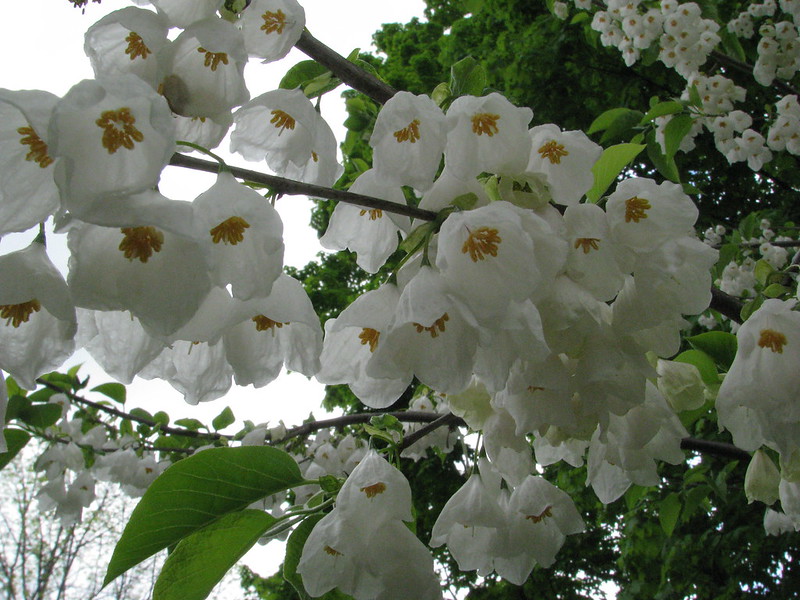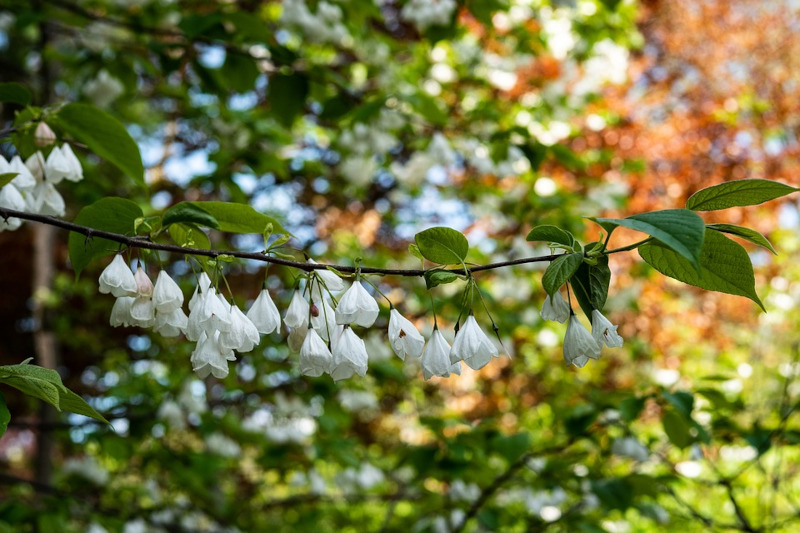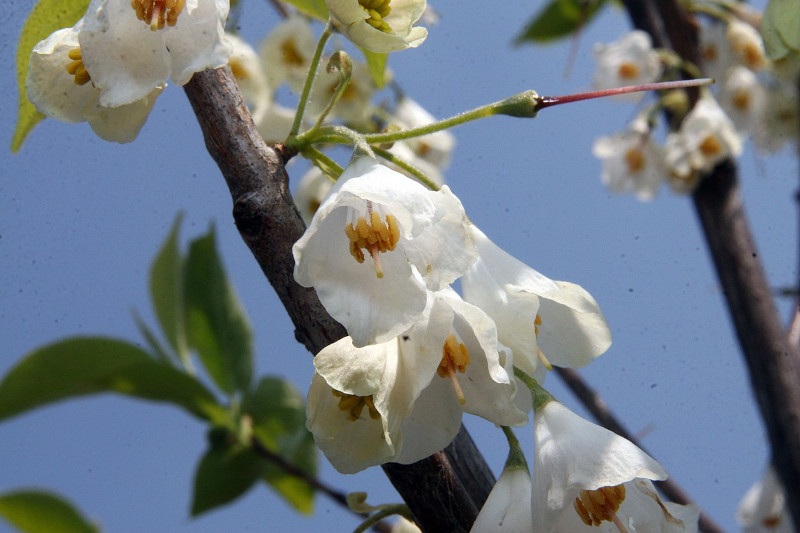
Carolina Silverbell Facts
- This breathtaking flora most frequently goes by the only slightly descriptive common name of the Carolina Silverbell. Yet it’s not the only general name it holds. It’s also known as the mountain silverbell, snowbell tree, and opossum wood, among others.
- Within the scientific community, however, it’s more often referred to by its technical name. Thankfuly, that’s a relatively easy term for the layperson to pronounce. That’s because this marvel of Nature bears the simple formal moniker of Halesia carolina.
- The magnficent creation of evolution received that easy to remember title due to the efforts of Carl Linnaeus. The esteemed Swedish botanist and zoologist accomplished the first official recognition of it as a separate and distinct species in the year 1758.
- Though it has a small native range, the Carolina Silverbell appears to be maintaining a population base that’s both stable and sufficient. That also seem to hold true throughout all parts of that range. The IUCN currently lists the plant as Least Concern.
- The species nevertheless does face some potential threats to its continued existence in the wild. Most of these stem from actions of man. They include such potential dangers as habitat loss and, of course, the ongoing perils posed by climate change.
Related Articles
Chilean Firebush Kauri Tree Bois Dentelle

Public Domain Image
Carolina Silverbell Physical Description
The visually stunning Carolina Silverbell commonly attains a height measuring roughly 66 ft (20 m). Truly exceptional specimens of the species do occur, though. These individuals sometimes attain a height equaling as much as 128 ft (39 m) in some portions of its range.
The gorgeous blooms of this magnificent tree never fail to catch the eye of the observer. These comparatively delicate small flowers also grow in bunches. Each typically develops as a white or a pale pink color. Each also develops in somewhat copious numbers.
Nevertheless, the fruit of the beautiful Carolina Silverbell must not be ignored, since it remains so popular with wildlife. This remains quite small, though, and light green in color. In Autumn, the numerous leaves on the tree usually change to a beautiful yellow color.
Even the rate of growth of this Angiosperm ranks as fully deserving of appreciation. However, the evolutionary reason for this remains a minor mystery. This characteristic nonetheless serves to make it a favorite among landscapers and homeowners alike.
- Kingdom: Plantae
- Phylum: Angiosperms
- Class: Eudicots
- Order: Ericales
- Family: Styracaceae
- Genus: Halesia
- Species: H. carolina

Carolina Silverbell Distribution, Habitat, and Ecology
Even within the Northern Hemisphere, the stunning Carolina Silverbell evolved as endemic to only a highly limited section of North America. More specifically, this zone of habitation covers severely restricted portions of the east coast of the United States.
Even more precisely, the greatest concentration of the delicate wonder occurs in the Appalachian Mountains and western Piedmont regions of North Carolina. The marvelous tree also grows in large numbers in parts of Tennessee, Georgia, and Alabama.
However, smaller populations of the luscious Carolina Silverbell also now exist in many other regions of the United States, due to the intentional actions of man. Not only that, but it now even exists in portions of Europe, due to its popularity as an ornamental tree.
The visually appealing species does have specific climatic needs to thrive, though. It therefore most commonly grows in areas of moist soil, usually near free-flowing water. It also serves as a major component of the forest undergrowth within much of its range.
Species Sharing Its Range
Carolina Wolf Spider Nevin’s Barberry Yosemite Cave Pseudoscorpion
Check out our other articles on 5 Rare Mind-Blowing Cloud Types, African Penguin, Eye of the Sahara, Bulbophyllum phalaenopsis, Clymene Dolphin, Death’s-head Hawkmoth















Leave a Reply